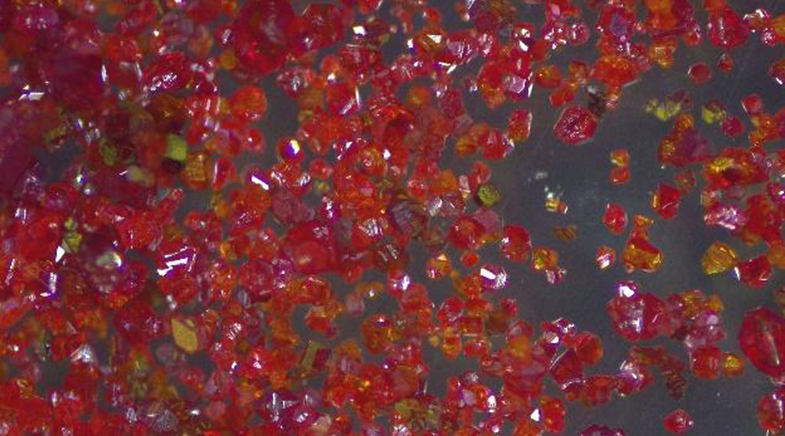A decoy with a bite
-
- from Shaastra :: vol 04 issue 04 :: May 2025

A lab-made pseudovirus promises faster rabies vaccine evaluation.
Antibodies cannot think, but they can be fooled. A genetic engineering trick executed in Easwaran Sreekumar's lab at the Institute of Advanced Virology (IAV) could bolster the global fight against rabies, a deadly viral infection spread primarily by dog bites in India, where it claims more lives than anywhere else.
Sreekumar and his colleagues have fashioned a pseudovirus – a harmless decoy virus that prompts antibodies to react as if it were the rabies virus. And they have used it to assess whether an anti-rabies vaccine has triggered an adequate immune response by measuring virus-neutralising antibodies. Their novel test promises to overcome limitations associated with the World Health Organization-recommended Rapid Fluorescent Focus Inhibition Test (RFFIT) to evaluate vaccine responses.
The advance comes amid global efforts to reduce rabies deaths — currently estimated at 59,000 annually — to zero by 2030, and concerns over India's toll of more than 20,000 deaths each year. After a bite, once the rabies virus enters nerve cells, the infection is almost always fatal. But the incubation period for rabies can range from 10 to 90 days, depending on the severity of the bite and the amount of virus introduced. The long incubation period provides a window for anti-rabies vaccines to generate neutralising antibodies. The WHO recommends a minimum concentration of 0.5 International Units per ml of antibodies in the blood as protection against rabies.
"The difficulties of using RFFIT have hobbled its widespread use," says Sreekumar, Director of the IAV and scientist at the Rajiv Gandhi Centre for Biotechnology in Thiruvananthapuram. RFFIT relies on live rabies virus, limiting its use to high-level biosafety labs. It also requires a costly fluorescent microscope and depends on visual inspection, which introduces subjectivity. And RFFIT results take between 48 and 72 hours.
To address these challenges, Sreekumar and his collaborators set out to develop a faster and more accessible alternative. The IAV team, working with researchers at the National Institute of Mental Health and Neurosciences (NIMHANS) in Bengaluru, unveiled a pseudovirus-based test that measures neutralising antibodies against the rabies virus.
Through genetic engineering and cell culture techniques, they used a modified vesicular stomatitis virus (VSV) — a livestock virus prized in research labs for being easy to manipulate and safe for humans — to carry a rabies glycoprotein on its surface. The modified VSV serves as the backbone of the pseudovirus, built to mimic the rabies virus and help detect neutralising antibodies in blood samples. The test yields results within 24 hours and involves a quantified readout, not a subjective assessment.
In a preliminary study, the IAV-NIMHANS researchers evaluated the test in 71 human blood samples, comparing the results with RFFIT. The test matched RFFIT every time. Their study was published in PLOS Neglected Tropical Diseases (bit.ly/rabies-pseudovirus).
"We've begun validating these results with more samples," says Reeta Mani, Professor at NIMHANS and a member of the study team. "If validated, this tool could become available in many more diagnostic labs across the country."
Anti-rabies shots post-bite are typically given on the day of the bite, with boosters on days 3, 7, 14, and 28. A more widely available test will allow anyone who has had the anti-rabies vaccine to assess the immune response. Those who have not developed the required antibody concentration could be prescribed additional boosters, Mani says.
Such post-vaccine testing becomes even more critical amid concerns about vaccine quality. Even when people receive all the required doses, counterfeit vaccines pose another risk. Earlier in 2025, the Central Drugs Standard Control Organization, India's apex drug authority, circulated an alert about counterfeit versions of a specific anti-rabies vaccine in Ahmedabad, Delhi, Lucknow, and Mumbai. The Medicines Control Authority of Zimbabwe also issued an alert in January warning about a falsified anti-rabies vaccine. A review of counterfeit anti-rabies vaccines, published in the journal Vaccine in 2019 (bit.ly/rabies-counterfeit), had cited instances of counterfeit vaccines in China, the Philippines, and Thailand. Experts say counterfeit or falsified products could pose a significant threat due to lack of efficacy, harmful components, or immunisation failure.
These challenges underscore the relevance of the IAV-NIMHANS innovation. While the techniques used by Sreekumar and his team to transform VSV into a pseudovirus are common in research, they had never been applied before to create a test for anti-rabies neutralising antibodies. "Rabies is primarily our problem, with the heaviest burden in South Asia," he says. "If we don't seek out solutions, who will?"
Have a
story idea?
Tell us.
Do you have a recent research paper or an idea for a science/technology-themed article that you'd like to tell us about?
GET IN TOUCH














